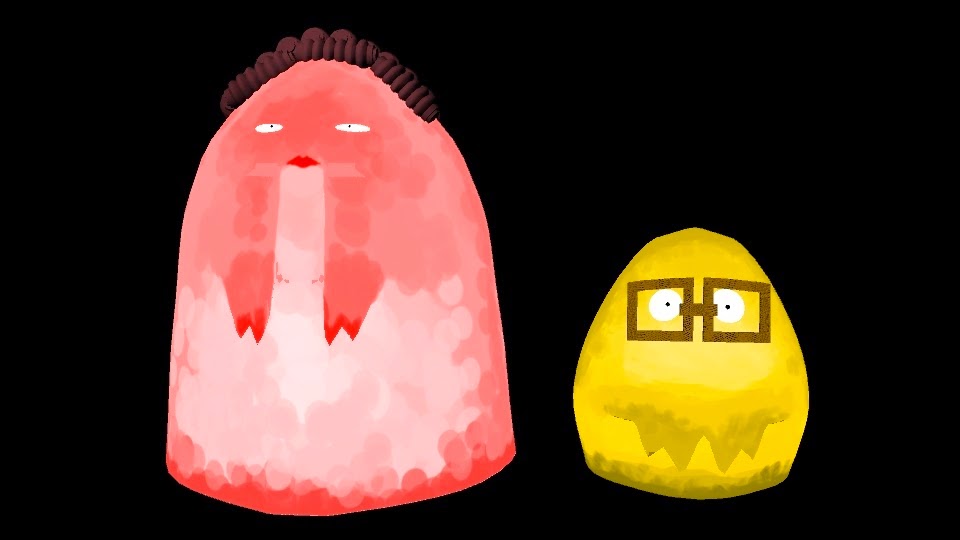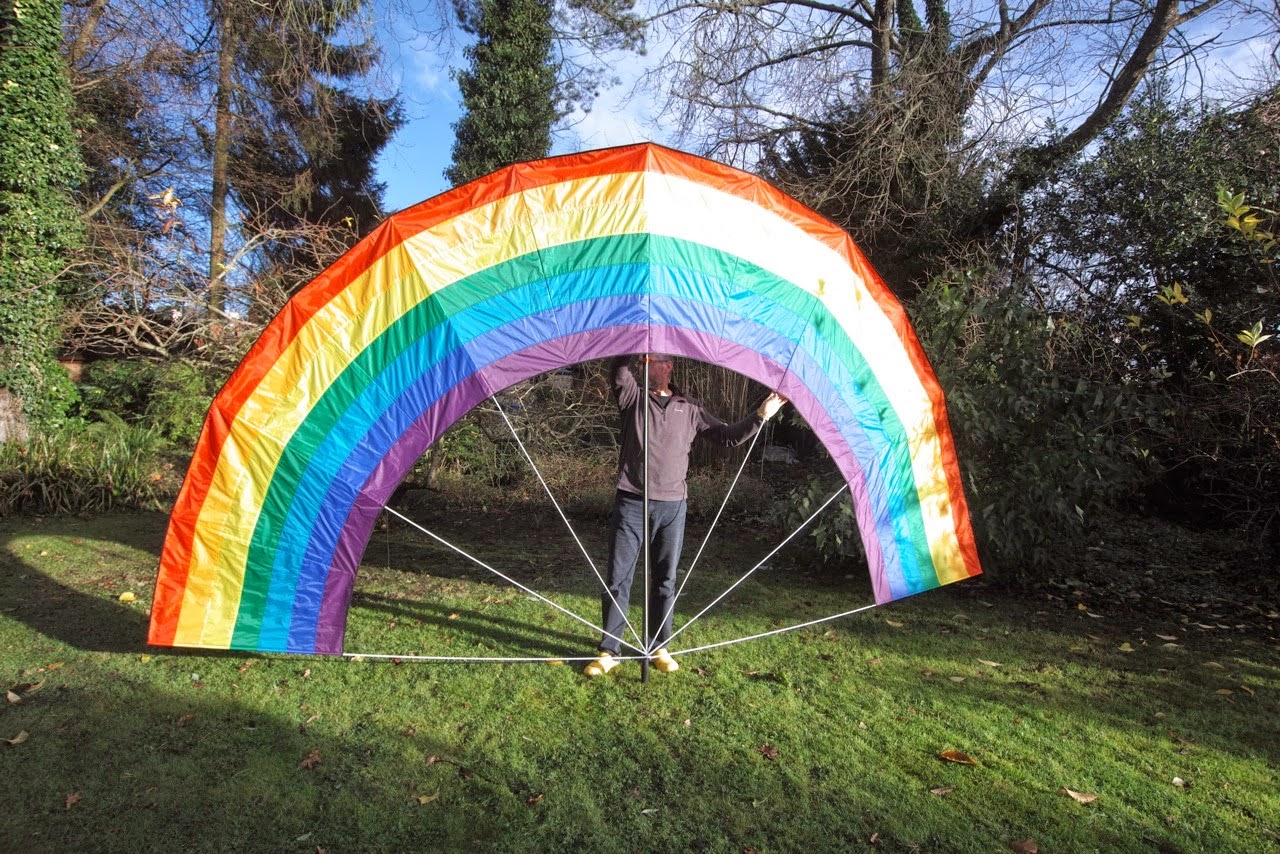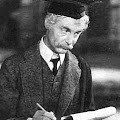
At time of going to press, the student community of Computer Animation Arts is electric with pre-deadline activity. In just a matter of days, our year one and year two students will submit their final work of this academic year. One week after that, our third years cross the finish line.
Next month's PWTM will therefore be a celebration of our students' final works; this month's edition is like a juicy teaser trailer, a preview of coming attractions; a veritable cornucopia of WIPs, dailies, renders, and rushes. That said, we are celebrating one goal completed, as our three year involvement with the ACT project comes to an end. We'll be looking back over our Interreg-funded adventures in applied-CGI and revisiting our successes - and exploring too how the legacy of the ACT projects transformed the ways in which our students make work.
Let's begin with the latest exploits of our busy final year students, with projects including a painstaking recreation of Piranesi's doomy and gloomy prisons, an autobiographical animation on a theme of bereavement, films inspired by tragic legends and creepy fairy stories, and another animated short situated in an Vegas-inspired purgatory! It's a vibrant clutch of creative undertakings from a talented, ambitious and hardworking cohort and as you explore their work, keep your fingers crossed that their final days of craft and graft are transformative and gremlin-lite.
If you want to explore a student project further, all you need do is click through from the student's name and you'll arrive at their respective course blog. Happy browsing!
Next month's PWTM will therefore be a celebration of our students' final works; this month's edition is like a juicy teaser trailer, a preview of coming attractions; a veritable cornucopia of WIPs, dailies, renders, and rushes. That said, we are celebrating one goal completed, as our three year involvement with the ACT project comes to an end. We'll be looking back over our Interreg-funded adventures in applied-CGI and revisiting our successes - and exploring too how the legacy of the ACT projects transformed the ways in which our students make work.
Let's begin with the latest exploits of our busy final year students, with projects including a painstaking recreation of Piranesi's doomy and gloomy prisons, an autobiographical animation on a theme of bereavement, films inspired by tragic legends and creepy fairy stories, and another animated short situated in an Vegas-inspired purgatory! It's a vibrant clutch of creative undertakings from a talented, ambitious and hardworking cohort and as you explore their work, keep your fingers crossed that their final days of craft and graft are transformative and gremlin-lite.
If you want to explore a student project further, all you need do is click through from the student's name and you'll arrive at their respective course blog. Happy browsing!
Kym Mumford - Piranesi's Prisons
Pre-vis
Anass Moudakir - The Beggar
 |
| The Beggar development sheet |
 |
| Rigging the beggar in AfterEffects |
The Beggar - Turnaround
George Nwosisi - The Silent Story
 |
| Test render |
Animation progression - 'Cigarette smoke'
Animated crows & 'Hills Of the Dead' - Pre-vis
 |
| Crow test render |
 |
| Erl-King lighting development |
 |
| Erl-King scene breakdown |
 |
| Erl-King lighting tests |
Animation progression - 'Will play them with thee'
Animation progression - 'The King appears in the distance'
Alex Edmonds - The House Always Wins
 |
| One armed-bandit test render |
 |
| 'La Vegas Limbo' digital set |
Vikki Kerslake - The Koi & The Crane
 |
| Butterfly pond texture development |
 |
| Cherry tree environment texture development |
Up next, a behind-the-scenes look at the progress of our year 2 students, who have been adapting existing sources for various CG contexts. We've got digital sets, game concepts and a wealth of character designs inspired by literature, psychology, corporate culture, the periodic table...
Tom Boothby - The Witch's Cottage (from Hansel & Gretel)
 |
| Concept painting |
 |
| Digital set progression #1 |
 |
| Digital set progression #2 |
Rosie Fenton - Rottcodd (from Mervyn Peake's Gormenghast)
 |
| Rottcodd UV-layout |
Ant Faulkner - 'Murphy' (character design inspired by Irish heraldry)
 |
| Murphy model completed |
 |
| Murphy model turnaround |
Will Huntley - Corporations as Wacky Races-inspired vehicles (assets for game)
 |
| Coca-Cola as a 'Monster truck' #1 |
 |
| Coca-Cola as a 'Monster truck' #2 |
 |
| Coca-Cola as a 'Monster truck' #3 |
Sam Cannon - Pinocchio
 |
| Modelling Pinocchio from orthographic drawing |
 |
| Pinocchio model complete |

Sukhvinder Ghai - King Azaz (from Norton Juster's The Phantom Tollbooth)
 |
| King Azaz final character design |
 |
| Modelling King Azaz |
 |
| King Azaz completed model |
 |
| Witch model textured |
Scott Turner - Rachman's Fear Acquisition Theory (as side-scrolling game concept)
 |
| Level design |
 |
| Concept painting |
 |
| Helium, Carbon & Hydrogen model sheet |
Animation Progression - Helium's eye movement tests
Heidi Grover - Briar Rose
 |
| Briar Rose final orthographic drawings |
 |
| Modelling progress #1 |
 |
| Modelling progress #2 |
 |
| Modelling progress #3 |
By way of prefacing this PWTM's showcase of current year one projects, I'm including the creative challenge as outlined by their Fantastic Voyage brief:
"In response to one of the scenarios presented to you at time of briefing, you are required to produce a complete 3D animation that demonstrates creatively your ability to interpret, transcribe and represent complex ideas in engaging and dynamic ways. Your final animation should demonstrate clearly your creative methodology as established by your Year 1 curriculum, i.e. pre-production (production design and art direction via concept art and the structuring of time-based narratives via storyboarding and revisualisations), production (modelling, UV layout, texturing & lighting, and animation), and post-production (compositing, digital editing, sound design, publication and promotion)."
The Fantastic Voyage commission brief is no small undertaking: not only are the year one students liaising with a client for the first time (Bioscientist Dr Peter Klappa from the University Of Kent), they are also challenged to consolidate a year's worth of skills and experience into a complete animation. The difficulty of this shouldn't be underestimated, for alongside all the creative rigours so required, the students are negotiating the cunning and caprice of Autodesk Maya. There will be tears, scars, and lessons learned, but there will also be some astonishing outcomes, as this sneak peak should illustrate!
Ryan Brand - Influenza Lifecycle
 |
| Environment test render #1 |
 |
| Environment test render #1 |
 |
| Environment test render #2 |
Animation progression - Bud's expressions
Animation progression - Bud walk-cycle
 |
| Test render #1 |

Chelsea Butler - Malaria lifecycle
 |
| Creating an 8bit-style asset in Autodesk Maya |
 |
| Animation test |
Charlie Serafini - Malaria lifecycle
 |
| Texturing pipeline |
 |
| Blendshape sequence |
Animation - Liver cell blend shape test
Anderson Moshi - Malaria lifecycle
 |
| Test render #1 |
 |
| Test render |
 |
| Adult hookworm animation test |
Pre-viz - Opening scene
Cat Barber - Hookworm Holidays (Hookworm lifecycle)
 |
| Mrs Hookworm thumbnails |
 |
| Mr Hookworm thumbnails |
 |
| Mrs Hookworm maquette |
 |
| Mr Hookworm maquette |
 |
| Mr & Mrs Hookworm 3D models |
Mr & Mrs Hookworm animation tests
 |
| Matte painting #1 |
Jamie Wathen - Influenza lifecycle
Pre-vis
Emma Morley - Influenza lifecycle
 |
| Influenza virus model complete |
 |
| 'Face House' concept painting |
 |
| 'Face House' digital set & matte painting |
Kayliegh Anderson - Influenza lifecycle
 |
| Body cell 3D model |
Body cells animation test
Mark Stamp - Infiltrate Exploit Spread (Malaria life-cycle)
Hepatocyte Infection - Pre-vis
Merozoite Entry - Pre-vis
On the afternoon of Thursday, April 16th, I stood before an assembly of orchestra directors, theatre directors, peers, teachers, youth workers and musicians and made my last presentation of the three year ACT project. It was an opportunity to reflect on all the ways in which our course’s involvement in ACT had shaped and changed Computer Animation Arts for the better – and to look forward with excitement to similar collaborations in the future.
ACT stands for A Common Territory – and acronym encompassing the core values of the project. As far as the course is concerned, ACT has since come to stand for some other things too.
A is for animation / ACT 1 2013 / Darius Milhaud's La création du monde
 |
| Still from La création du monde (2013) |
On Friday, July 12th 2013 at Grays Civic Hall, Essex, the Orchestre Symphonique de Bretagne performed a programme of music on the theme of 'rhythm'. The programme of music explored ideas of rhythm in classical music and in the celebrated jazz of the late Dave Brubeck. The director of the Orchestre Symphonique de Bretagne, Marc Feldman, challenged Computer Animation Arts to work collaboratively to create an original work of animation designed to accompany his orchestra's performance of Darius Milhaud’s ballet, La création du monde.

Original speed paint, Phil Gomm 2013

Original speed paint, Simon Holland 2013

Original speed paint, Jake Bryant 2013
Over a period of ten consecutive week days, the students, staff & alumni of Computer Animation Arts were challenged to produce abstract digital paintings in synesthetic response to segments of Milhaud's ballet. The CAA community were asked to listen to each musical extract and then respond to it visually through the creation of original digital paintings in Photoshop. CAA alumni Tom Beg and Jordan Buckner then created the animation from the digital paintings using Autodesk Maya and After Effects.
La création du monde (2013)
 |
| Preparing for projection at the Maison de la Culture, Amiens, December 19th 2013 - Photograph by Tom Beg |
The July concert was a great success and the animation lauded by the audience and project co-ordinators alike - so much so we were invited to participate in a second performance of Milhaud's ballet - this time at the Maison de la Culture in Amiens, France. A little after 9.30pm on December 19th, after a very long day of set-up and back-stage preparation, the house lights dimmed and the musicians of the Orchestre de Picardie began to play the first, melancholy notes of Milhaud's ballet. Behind them, rear-projected onto the theatre's pristine twelve metre screen, our animation began to play too - with an audience of 600 people looking on.
Anita 'Class of 2014' Gill graduated from Computer Animation Arts last year. Anita's involvement with the Milhaud project directly inspired her final animations, in which she combined music, speed painting and abstract impressionism to first produce a fantasia on an avian theme, and then a sensorial evocation of a relative’s childhood memories of India.
Anita Gill - Avis (2014)
Anita Gill - Yatara-Nu (2014)
C is for conversion /ACT 2 2014 / Verdi’s Requiem
Our second ACT adventure began in earnest when conductor Arie van Beek agreed to wear motion sensors for the ninety minutes of Verdi’s Requiem, as performed by the Orchestre de Picardie. The data produced from Arie's moment-to-moment movement was captured and enlisting the planet-sized talents of CAA alumni, Ethan Shilling, the numercial data was converted into seven 3D curves representing the seven movements of the Requiem.
 |
| The Requiem's Dies Irae movement as a motion-captured curve |
 |
| The seven movements of the Requiem expressed as 3D synesthetic forms by the students of Computer Animation Arts |
 |
| The Dies Irae curve converted into a 3D model (left) and final form in readiness for laser-cutting |
Our students were then given the seven curves as starting points for the creation of their own CG forms, modelled in Autodesk Maya after their synesthetic impressions of the Requiem. A selection from the student outcomes was made, which were then translated into seven physical sculptures, laser-cut from steel by Tim Hall and sited in the gardens of the Royal Opera House's High House Production Park, Purfleet.
 |
| Requiem (Photograph by Jonathan Simms 2014) |
 |
| Dies Irae (Photography by Jonathan Simms 2014) |
 |
| Offertorio (Photograph by Jonathan Simms 2014) |
 |
| Sanctus (Photograph by Jonathan Simms 2014) |
 |
| Agnus Dei (Photograph by Jonathan Simms) |
 |
| Lux Aeterna (Photograph by Jonathan Simms) |
 |
| Libera Me (Photography by Jonathan Simms) |
It was a truly exciting departure for the course to convert CG forms into tangible art forms. Our using CGI as a means to explore different kinds of creative disciplines in part inspired Emma 'Class of 2014' Foster to use her skills and vision as a CG artist to envision the sculptural forms and kinetic installations imagined by Felice Azari in his manifesto, The Futurist Garden.
Emma Foster - The Futurists' Garden (June 2014)
T is for Transference / ACT 3 2015 / Benjamin Britten’s Noye’s Fludde.
Our third and final creative ACT exploited the special ability of CGI to transfer ideas from one discipline to another. Sometimes, the most exciting CGI isn’t an end in itself, but is rather the connective tissue between the imagination and fabrication; between the pencil sketch and the prototype.
By way of a fitting finale to the ACT project, the course worked alongside a multiplicity of different collaborators in the staging and performance of Benjamin Britten's mini opera, Noye's Fludde - an opera intended for largely amateur performers. Think of it as being a little like a school nativity play - a performance not characterised by high polish or showy stagecraft, but rather by lo-fi charm and ad-hoc energy.
With this in mind, we approached our brief (the design and execution of a flat-pack, fold-up ark, rainbow, and various celestial bodies), with an emphasis on keeping things simple. We wanted the various objects to look as if children might have created them at school in an arts and crafts lesson, so we looked at simple folding mechanisms and paper boats. Ethan Shilling created a series of visualisations that were sent to kite-maker, Karl Longbottom, whose job it was to turn our proof-of-concepts into performance-ready physical props.
Noye's Fludde was performed first at the Cirque Jules Verne in Amiens, France, followed by performances at the Théâtre impérial, Compiègne, and Comberton Village College, Cambridge. Tom Beg captured ACT's last hurrah in a series of evocative photographs. You can view Tom's photographs from the original Amiens performance here and here and from the UK performances here.
With this in mind, we approached our brief (the design and execution of a flat-pack, fold-up ark, rainbow, and various celestial bodies), with an emphasis on keeping things simple. We wanted the various objects to look as if children might have created them at school in an arts and crafts lesson, so we looked at simple folding mechanisms and paper boats. Ethan Shilling created a series of visualisations that were sent to kite-maker, Karl Longbottom, whose job it was to turn our proof-of-concepts into performance-ready physical props.
Noye's Fludde was performed first at the Cirque Jules Verne in Amiens, France, followed by performances at the Théâtre impérial, Compiègne, and Comberton Village College, Cambridge. Tom Beg captured ACT's last hurrah in a series of evocative photographs. You can view Tom's photographs from the original Amiens performance here and here and from the UK performances here.
 |
| The 'pop-up' ark created by Karl Longbottom |
 |
| The ark in performance at Cirque Jules Verne, Amiens, France, January 2015 |
 |
| The 'fold-out' celestial bodies |
 |
| The celestial bodies at the finale of Noye's Fludde, Comberton Village College, Cambridge, March 2015 |
 |
| Karl Longbottom with the fold-out rainbow |
 |
| The rainbow in performance at Cirque Jules Verne, January 2015 |
From the outset, our involvement with ACT has been an invigorating creative adventure. It has changed the way we think about CGI and its applications and opened up fascinating discussions about the breath, depth and diversity of our students' skillsets. I've never been more convinced that the staff, students and graduates of Computer Animation Arts represent a real creative force to be reckoned with; we can make animations, we can make art from data, manifest physical entities from vertices and polygons, we can collaborate and join forces - we can communicate, visualise and 'imagineer'. In short, we can accomplish extraordinary and surprising things.
So, the curtain has closed on ACT, but I can announce another great big speculative project-in-the-offing. The ONE project stands for the 'Orchestra Network Of Europe' and represents a new adventure for Computer Animation Arts in cross-discipline collaboration. Very soon, we will be working again with some of Europe's finest orchestras and musicians, devising new and fascinating relationships between art, music and performance. Watch this space, ladies and gentlemen; something tells me you ain't seen nothing yet!
The last word...
To all our students - the very best of luck for the final push! 'Be Amazing!'
'Quality is never an accident. It is always the result of intelligent effort.' John Ruskin.











Well done everyone! : )
ReplyDeleteAs always lots of great work, and a shed load of creativity
ReplyDeletehere is a little tecnical tip for Rosie Fenton _your Rottcod's UVs are very stretched, so the best way to UV a head is to actualy put the seam straight down the center cutting the head in half and putting bothe sides(unflipped) on two addoining UDIM's, also seperate the ears, this maximizes UV space and stops the distortion you always get around the nose area.Thas it, best of luck to you all.
Robin
Thanks for dropping by, Robin - I know how busy you are! Always appreciated :D
DeleteThankyou - have taken note :)
Delete